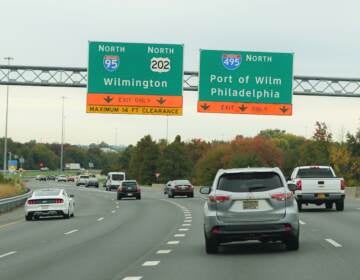How live-in grandmas help moms cut their car trips

Does having a grandparent around to share in the child-caring duties change mothers’ transportation habits?
Some new research from Kelcie Ralph and Anne Brown at UCLA’s Institute of Transportation Studies suggests it does, and helps shed some light on how family policies and land use policies feed back into transportation choices.
For their paper “Time Use and Travel in Three-Generation Households” Ralph and Brown examined American Time Use Survey data from the federal Bureau of Labor Statistics to compare how two-generation households with only parents and children spent their time on a variety of common activities compared to three-generation households with parents, children, and grandparents living under one roof. Specifically, they were looking to see whether the presence of an additional care-giver in the home would impact work, leisure, and travel behavior.
To get at this question more directly, they excluded three-generation households with special circumstances, like ones with teen moms or households where the grandparent is over 80 years old and thus more likely to be a recipient of care than a care-giver, and looked at only the “traditional” three-generation households. And they looked at the data over a fairly long time horizon—2003-to 2012—to get a large enough sample size.
The number of three-generation households is still very small nationally, though it is growing—from 5.5% in 1980 to 8.4% in 2012—and the growth appears to be driven by demographics more than income or cyclical economic factors. Interestingly, they found that low-income households are only slightly more likely to contain three generations of people than high-income households.
The paper’s top-line finding was that “women in three-generation households benefit from helping hands with housework; they spend between 30 and 60 minutes less each day on household labor than women in two-generation households.”
There are lots of other interesting differences in time use too for those interested in this topic more generally. For the PlanPhilly readers though, I’ll cut right to the transportation takeaways.
Basically, child-serving trips (taking a son or daughter to the dentist, after-school activities, etc.) are more likely to be car trips, and moms are more likely to stack them together in a “tour” of multiple errands. When a grandparent is making more of these child-serving trips, however, they are less likely to be car trips, and are also less likely to take place during peak travel times. With some of the chauffeuring duties off their plates, and more space to plan travel proactively, moms are more likely to use non-car transportation modes to commute to work and other places.
Here’s how Ralph and Brown describe their findings:
What are the takeaways for public policy?
One is about the importance of frequency and predictability in public transit, particularly buses. The more parents have to actively think about the bus schedules, rather than just show up at the bus stop expecting the next bus to arrive within a few minutes’ time, the less feasible of an option the bus is going to be for completing stacked “tours” of child-serving errands.
Another takeaway is that if the next Mayor and City Council remain committed to the Office of Sustainability’s current goal of cutting vehicle miles, then they need to start thinking seriously about how our zoning laws interact with this goal.
One of the more direct routes to encouraging more three-generation households is to zone more neighborhoods to allow accessory dwellings—sometimes called “granny flats.” Accessory dwellings are residences located on the same property as the principle dwelling, either in a separate unit or even a separate building, but typically with a separate entrance to allow for some privacy.
The main argument for allowing accessory dwellings is to enable more seniors to age in place close to their families, but with a measure of independence in a separate nearby living space. The main argument against them is that they introduce rental units into areas zoned for single-family homes, and once they exist, the city can’t really control who rents them.
Even after the big zoning reforms of 2012, Philly’s zoning rules concerning accessory dwellings are still pretty restrictive. Here’s what the code has to say about them:
Accessory dwelling units are allowed only on lots occupied by a single-family use contained in a detached or semi-detached building in the permitted areas described in § 14-604(11)(d) (Permitted Areas). Accessory dwelling units must be located within the interior of the principal building or within the interior of a detached accessory building, such as detached garages, that are in existence as of the effective date of this Zoning Code.
Section (d) says only “Reserved,” suggesting there are rules yet to be drafted, but Council hasn’t drafted them yet.
WHYY is your source for fact-based, in-depth journalism and information. As a nonprofit organization, we rely on financial support from readers like you. Please give today.






